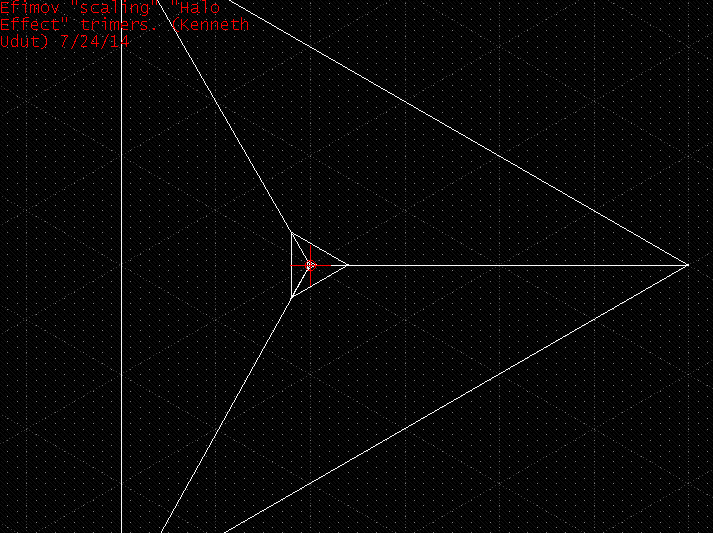 | ||
The Efimov effect is an effect in the quantum mechanics of few-body systems predicted by the Russian theoretical physicist V. N. Efimov in 1970. Efimov’s effect is where three identical bosons interact, with the prediction of an infinite series of excited three-body energy levels when a two-body state is exactly at the dissociation threshold. One corollary is that there exist bound states (called Efimov states) of three bosons even if the two-particle attraction is too weak to allow two bosons to form a pair. A (three-particle) Efimov state, where the (two-body) sub-systems are unbound, are often depicted symbolically by the Borromean rings. This means that if one of the particles is removed, the remaining two fall apart. In this case, the Efimov state is also called a Borromean state.
Contents
History
The unusual Efimov state has an infinite number of similar states. These states are completely identical except that their sizes and energy levels scale by a universal factor of approximately 22.7 (in the case of three identical bosonic particles), see A242978.
In 2005, for the first time the research group of Rudolf Grimm and Hanns-Christoph Nägerl from the Institute for Experimental Physics (University of Innsbruck, Austria) experimentally confirmed such a state in an ultracold gas of caesium atoms. In 2006, they published their findings in the scientific journal Nature. Further experimental proof for the existence of the Efimov state has been given recently by independent groups. Almost 40 years after Efimov's purely theoretical prediction, the characteristic periodic behavior of the states has been confirmed.
Experimentation
The most accurate experimental value of the scaling factor of the states has been determined by the experimental group of Bo Huang at Innsbruck University as 21.0(1.3), being very close to Efimov's original prediction.
The interest in the "universal phenomena" of cold atomic gases is still growing, especially because of the long awaited experimental results. The discipline of universality in cold atomic gases near the Efimov states are sometimes commonly referred to as "Efimov physics".
In 2014 the experimental group of Cheng Chin of the University of Chicago and the group of Matthias Weidemüller of the University of Heidelberg have observed Efimov states in an ultracold mixture of lithium and caesium atoms, which extends Efimov's original picture of three identical bosons.
An Efimov state existing as an excited state of a helium trimer was observed in an experiment in 2015.
Usage
The Efimov states are independent of the underlying physical interaction and can in principle be observed in all quantum mechanical systems (i.e. molecular, atomic, and nuclear). The states are very special because of their "non-classical" nature: The size of each three-particle Efimov state is much larger than the force-range between the individual particle pairs. This means that the state is purely quantum mechanical. Similar phenomena are observed in two-neutron halo-nuclei, such as lithium-11. (Halo nuclei could be seen as special Efimov states, depending on the subtle definitions.)
